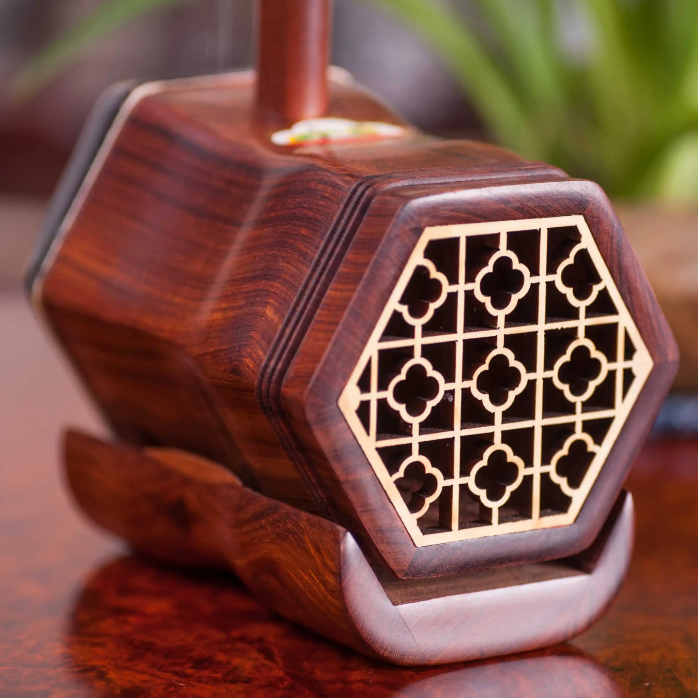Erhu tuning and range
The erhu is generally tuned in the relationship of fifths, with a range of three octaves.
The erhu is generally tuned by the relationship of fifths, such as (d1, a1, c1, g1, g, d1, a, e1) or (e1, b1).
When playing music or opera with some local colors, in addition to the fifth-degree relationship, there are also pure fourth-degree relationships. There are even octave tunings in some fields.

The sound range of the erhu is three octaves, but in general music, it seldom exceeds two and a half octaves.
Erhu timbre is hard and soft, with delicate and flexible performance and rich expressiveness. It is suitable for playing various complex tones, not only soft and smooth tunes, but also jumping and powerful melodies. In the folk silk and bamboo bands, they often play the lead role.
Usually, 2-6 erhus are used in small and medium-sized ethnic bands, while in large-scale ethnic orchestras, there are 10-12 seats. In addition to being used for solo and ensemble, it is also the main accompaniment instrument for local opera and rap music such as Pingju, Yue Opera, Shanghai Opera and Cantonese Opera.
 渝公网安备 50010702504639号
渝公网安备 50010702504639号